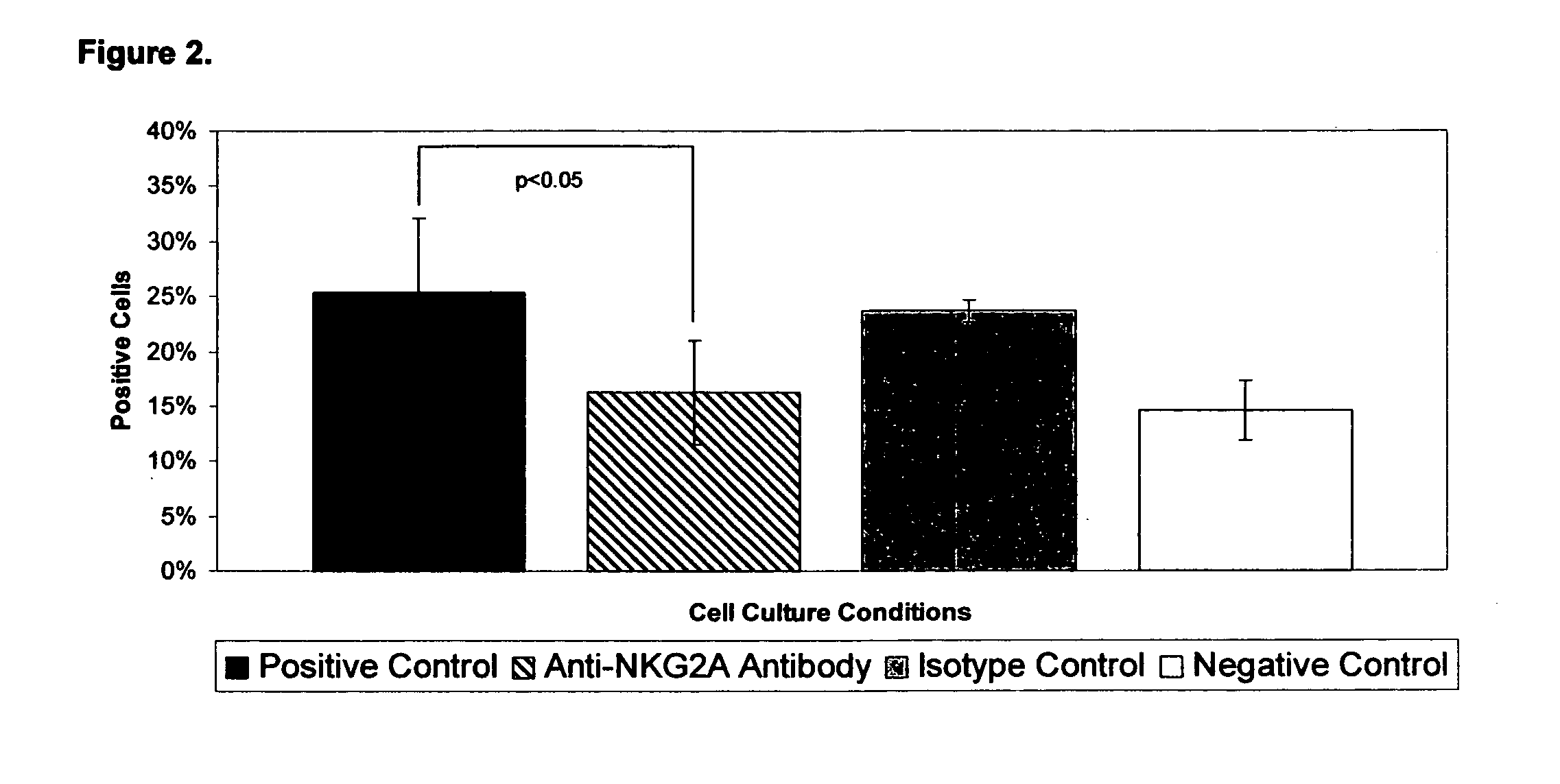Method of treating respiratory virus-induced asthma with Th2 lymphocyte NKG2A receptor agonists
a technology of nkg2a receptor and lymphocyte, which is applied in the field of immunological treatment of viral-induced asthma, can solve the problems of unfavorable shift in th1/th2 balance, and achieve the effect of increasing the signaling of the nkg2a receptor protein and protecting against virus-induced asthma
- Summary
- Abstract
- Description
- Claims
- Application Information
AI Technical Summary
Benefits of technology
Problems solved by technology
Method used
Image
Examples
example 1
[0025]A total of eight apparently healthy, non-atopic, non-asthmatic adult volunteers were enrolled in this study. Both genders and a diverse group of ethnicities and races were represented among the participants.
[0026]Following culture in the four distinct conditions (positive control, anti-NKG2A antibody, isotype control, and negative control) Th2 cell samples were examined by four-color flow cytometry to confirm the expected rise in cells positive for NKG2A surface expression. The cultured cells were >97% pure CD3+CD4+CD8-Th cells. We found significant up-regulation of Th2 NKG2A positivity from 7.3±2.3% in negative controls to 13.7±3.8% in positive controls (p=0.03) consistent with our previously published data[17]. (Table 2 and FIG. 1) There was no significant difference in the surface expression of NKG2A (16.0±4.0%) on the activated Th2 cells cultured in the presence of anti-NKG2A antibodies and the positive controls. Additionally, there was no appreciable change in the low lev...
example 2
[0027]In order to assess the impact of NKG2A signaling on Th2 cell effector function following activation through the TCR, we performed flow cytometry for intracellular expression of IL-4 and IFNγ. There was significant up-regulation of intracellular IL-4 from 16.1±3.2% in negative controls to 25.4±6.7% in positive controls (p=0.03). (Table 3 and FIG. 2) When TH2 cells were activated in culture in the presence of anti-NKG2A antibodies, the intracellular expression of IL-4 fell from 25.4±6.7% to 16.3±4.7% (p=0.05). (Table 3 and FIG. 3) This level of IL-4 expression was not significantly different from the negative controls (14.6±3.7%).
[0028]We also examined expression of IFN-γ and found similar changes in intracellular expression. Negative control expression was 4.8±0.8%. (Table 3) This increased to 7.7±1.3% in positive controls (p=0.05) and fell to 5.5±1.3% in the presence of anti-NKG2A antibody (p=0.04). This level of expression was not different from negative controls.
Discussion o...
PUM
| Property | Measurement | Unit |
|---|---|---|
| speed | aaaaa | aaaaa |
| density | aaaaa | aaaaa |
| concentration | aaaaa | aaaaa |
Abstract
Description
Claims
Application Information
 Login to View More
Login to View More - R&D
- Intellectual Property
- Life Sciences
- Materials
- Tech Scout
- Unparalleled Data Quality
- Higher Quality Content
- 60% Fewer Hallucinations
Browse by: Latest US Patents, China's latest patents, Technical Efficacy Thesaurus, Application Domain, Technology Topic, Popular Technical Reports.
© 2025 PatSnap. All rights reserved.Legal|Privacy policy|Modern Slavery Act Transparency Statement|Sitemap|About US| Contact US: help@patsnap.com



